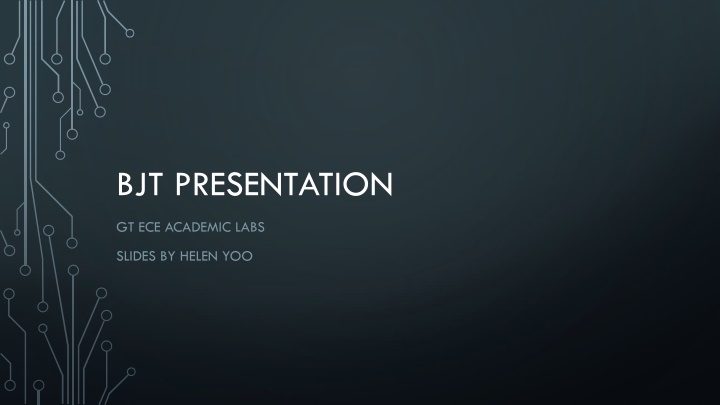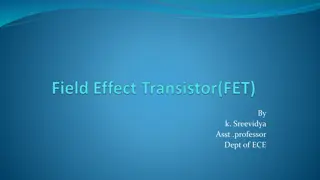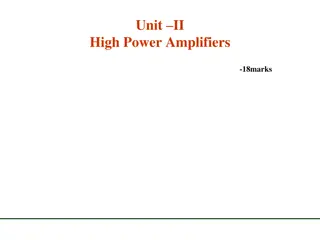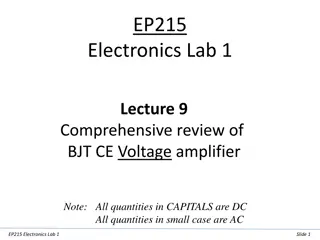
Bipolar Junction Transistors: Basics and Applications
Explore the world of Bipolar Junction Transistors (BJTs) through an in-depth presentation covering what a transistor is, the functions of a BJT, types of BJTs (PNP vs. NPN), operating regions, and different ways to connect BJTs in a circuit. Learn about the working principles and applications of BJTs in electronic circuits.
Download Presentation

Please find below an Image/Link to download the presentation.
The content on the website is provided AS IS for your information and personal use only. It may not be sold, licensed, or shared on other websites without obtaining consent from the author. If you encounter any issues during the download, it is possible that the publisher has removed the file from their server.
You are allowed to download the files provided on this website for personal or commercial use, subject to the condition that they are used lawfully. All files are the property of their respective owners.
The content on the website is provided AS IS for your information and personal use only. It may not be sold, licensed, or shared on other websites without obtaining consent from the author.
E N D
Presentation Transcript
BJT PRESENTATION GT ECE ACADEMIC LABS SLIDES BY HELEN YOO
WHAT IS A TRANSISTOR? Three terminal active device made from semiconducting material Acts as insulator or conductor by applying small signal voltage Two Functions Switching (Digital) Amplification (Analog)
WHAT IS A BJT? Bipolar junction transistor Combined two individual signal diodes that give two PN-junctions connected together in series sharing either a common P or N terminal Creates three terminals Emitter, Base, Collector Current-controlled switch dependent on amount of current that flows through emitter to connector in proportion to the amount of voltage applied to terminal
TWO TYPES OF BJT PNP vs. NPN Dependent on biasing and polarity of power supply Direction of the conventional current flow between base and emitter terminal is in opposite direction but always pointing from the positive P type to the negative N type region
THREE REGIONS Active Region Transistor operates as amplifier Saturation Transistor operates as a turned-on switch Cut-off Transistor operates as a turned-off switch
THREE WAYS TO CONNECT BJT TO A CIRCUIT Common Base Configuration Voltage gain but no current gain Common Emitter Configuration Current and voltage gain Common Collector Configuration Current gain but no voltage gain Common Base Common Emitter Common Collector Characteristic Input Impedance Low Medium High Output Impedance Very High High Low Phase Shift 0o 180o 0o Voltage Gain High Medium Low Current Gain Low Medium High Power Gain Low Very High Medium






















